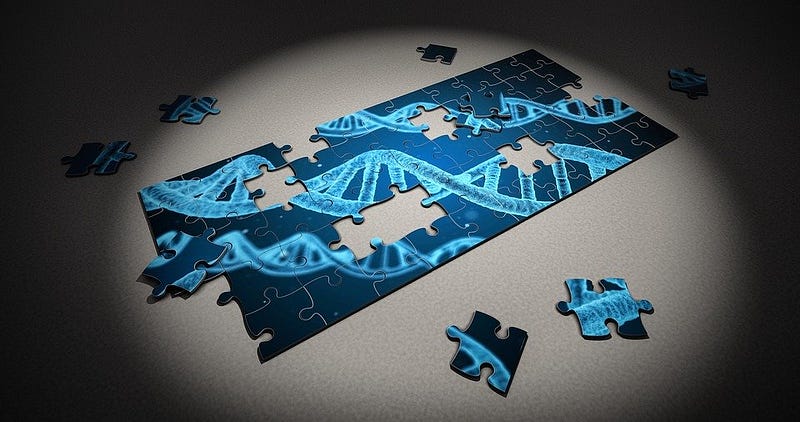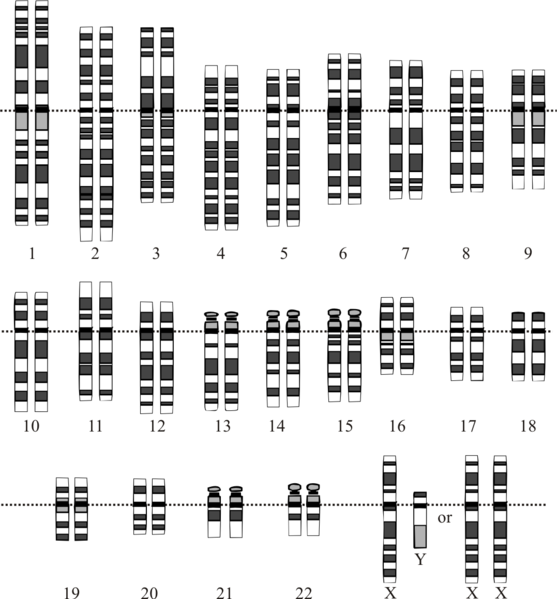# Innovations in Chromosome Construction: A New Era in Genetics
Written on
Chapter 1: Understanding DNA Packaging
Our genetic makeup, often described as "star stuff," is primarily dictated by our DNA. Each cell in our body harbors the complete genetic blueprint for a human being. Although the genome remains consistent across cells—except for mutations that may occur post-conception—the differences in cellular functions arise from varying sequences of gene activation.
Most human DNA resides within the nucleus, while some smaller fragments are found in the mitochondria. If we were to unravel all the DNA in our cells, it would stretch approximately 2 meters in length. However, this extensive molecule is confined within a minuscule cell that can only be viewed under a microscope. This phenomenon is due to the intricate packaging of DNA.
DNA coils around proteins known as histones, and with the help of chaperone proteins, it forms tightly condensed structures. Human cells contain 46 of these structures, or chromosomes, comprising 44 autosomes and 2 sex chromosomes, X and Y. Contrary to the static images often depicted in textbooks, chromosomes are dynamic entities that constantly coil and uncoil, enabling specific DNA sequences to be transcribed into RNA and subsequently translated into proteins.

Chapter 2: The Role of Chromosomes in Gene Interaction
Genes do not function in isolation; they influence each other's activity and are responsive to environmental stimuli. The structure and configuration of chromosomes are vital as well. For instance, genetic linkage refers to the tendency of genes located close to one another on a chromosome to be inherited together.
Recent advancements in DNA sequencing and assembly technologies have opened the door to the possibility of synthesizing entire chromosomes. One notable initiative, Sc2.0 (Synthetic Yeast 2.0), aims to redesign the complete genome of the well-studied yeast species, Saccharomyces cerevisiae. In 2018, the collaborative research groups involved in this project published a series of papers in Nature Communications, detailing their use of a technique called SCRaMbLE—Synthetic Chromosome Rearrangement and Modification by LoxP-mediated Evolution—for designing synthetic yeast chromosomes.
Here’s a simplified three-step overview of the process:
- Insert loxP recombination sites, which are specific DNA sequences, between genes and chromosomal structures.
- Introduce the Cre recombinase, an enzyme that activates loxP, leading to large-scale recombination events, effectively "scrambling" the chromosome.
- Explore and refine the various scrambled chromosomes generated.
Chapter 3: The Challenge of Constructing Chromosomes from Scratch
While redesigning chromosomes is a significant achievement, constructing them entirely from the ground up is an even greater challenge. The best way to comprehend a physical structure is to attempt to construct it when possible. To quote physicist Richard Feynman, "What I cannot create, I do not understand."
However, assembling a genome from scratch presents its own difficulties. This process often requires connecting numerous smaller DNA fragments, necessitating not only the appropriate tools but also a clear template. Various DNA strands can be likened to puzzle pieces, and we need a vision of the final assembly—be it a complete genome or a single chromosome.
Is the Human Genome Project completed? The answer is both yes and no. While the current human reference genome (GRCh38) is the most accurate vertebrate genome to date, significant gaps still exist.
A new study addressing these gaps revealed that the initial human reference genome released by the US National Center for Biotechnology Information was heavily fragmented. Ongoing efforts to finalize the genome, alongside the Genome Reference Consortium's stewardship, have improved its continuity. Nonetheless, the most repetitive regions remain unresolved, and no chromosome has been fully represented from telomere to telomere.

Chapter 4: Closing the Gaps in Human Genome Understanding
Indeed, researchers have made progress in this area. By utilizing ultra-long DNA sequence reads obtained through nanopore sequencing, scientists successfully closed 29 gaps in the human X chromosome, completing this critical segment of the genome. As articulated by the researchers, "This complete telomere-to-telomere assembly of a human chromosome suggests that it may soon be possible to finalize the entire human genome using existing technologies."
With the pieces now in place, the next step is to construct a comprehensive template.
For additional insights into science and writing, connect with us on Twitter (@evolveon). We welcome your thoughts!